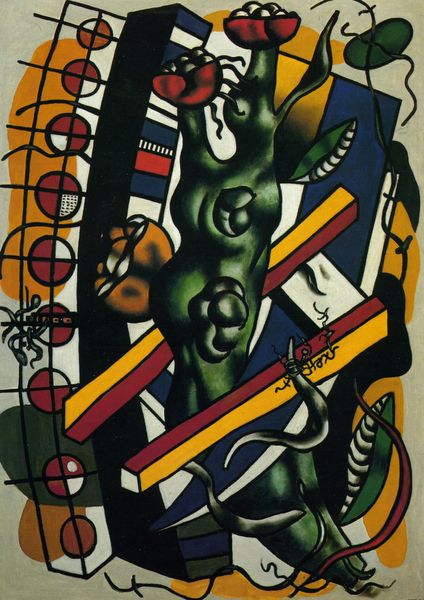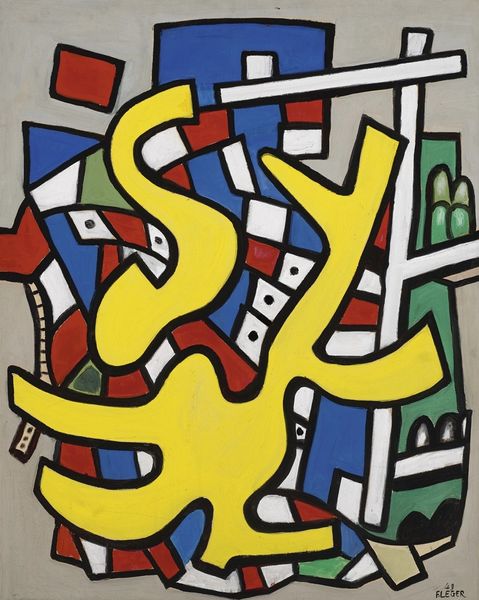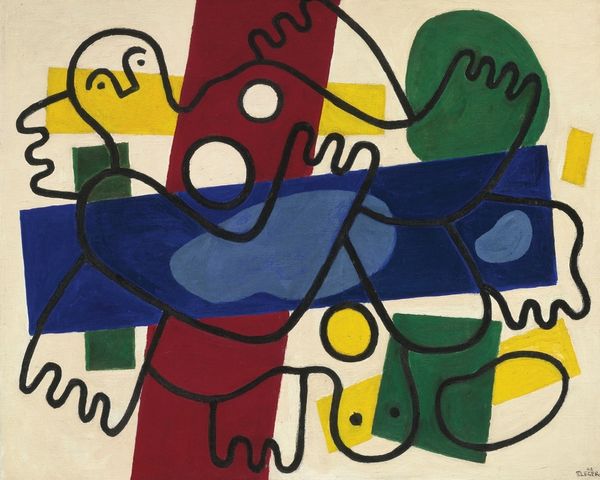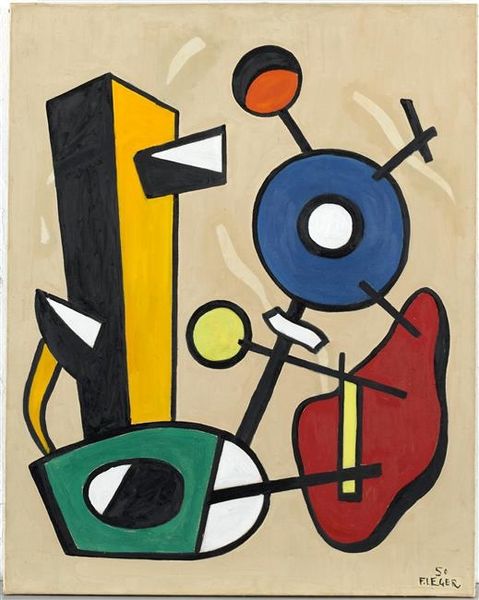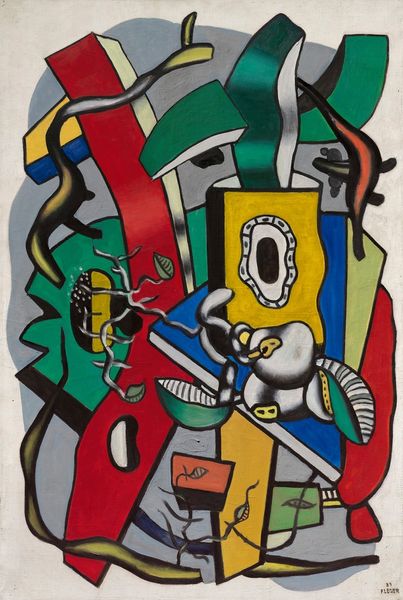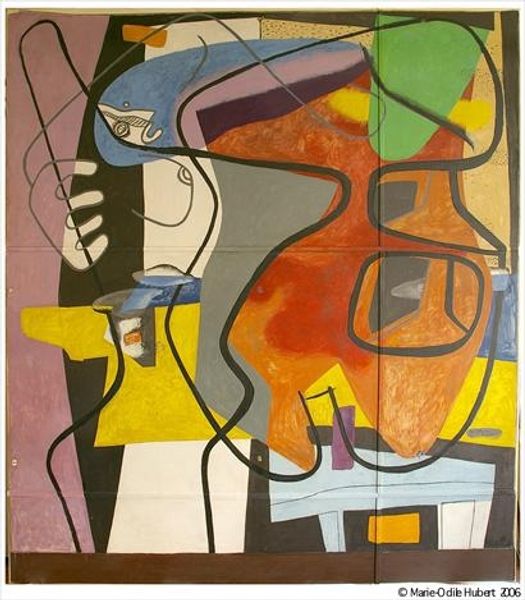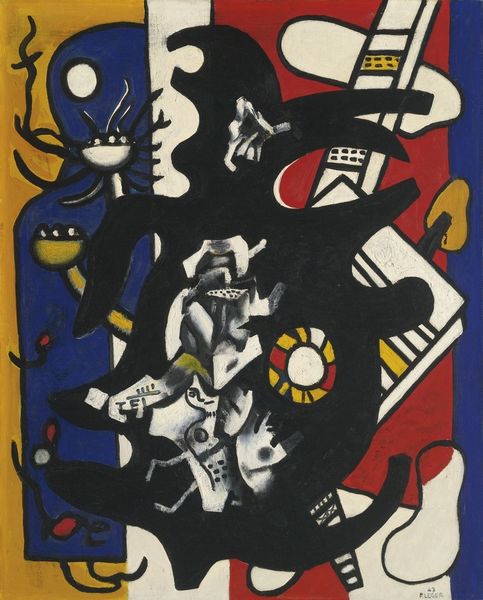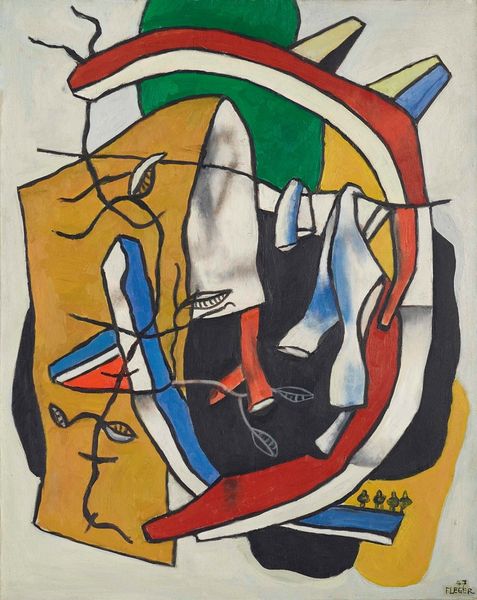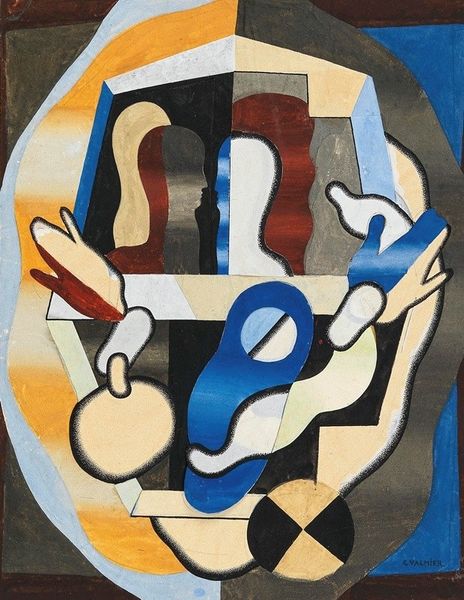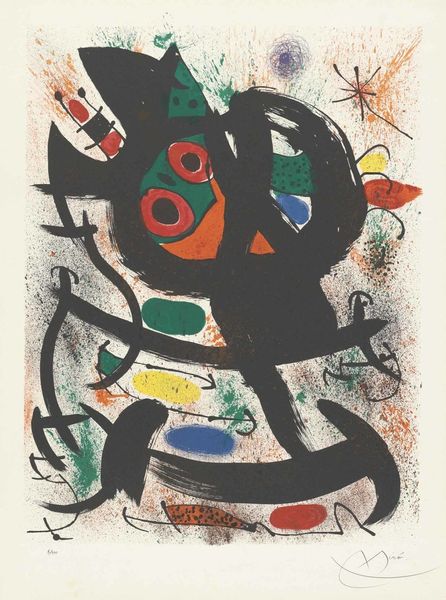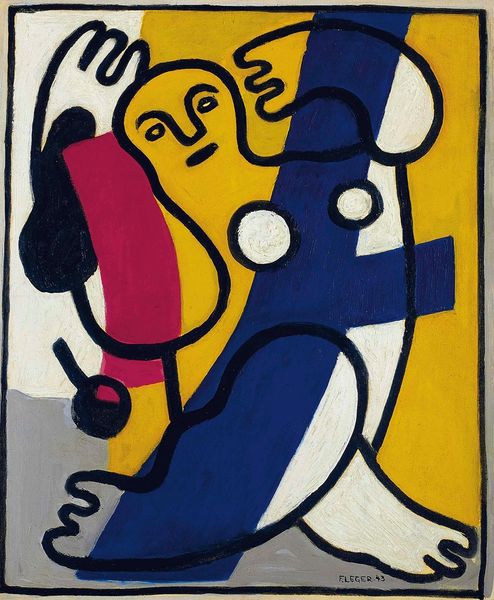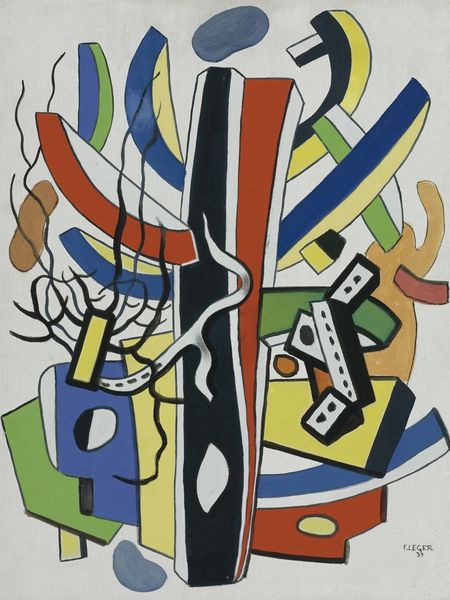
painting, acrylic-paint
#
cubism
#
painting
#
pop art
#
acrylic-paint
#
figuration
#
geometric
#
line
#
modernism
Copyright: Fernand Leger,Fair Use
Editor: We're looking at Fernand Léger's "Dance," painted in 1942 using acrylic paint. The figures and geometric shapes almost feel like a playful collage. How do you interpret the interaction between the line and the color planes within the piece? Curator: Indeed, the formal interplay here is crucial. Note how Léger employs black outlines to define figures, objects, and abstract shapes alike. These lines act as armatures, giving structure and distinctness to the forms. Observe the tension created where these lines intersect with blocks of pure color. The blue, yellow, red, and green areas aren’t merely background; they possess equal visual weight, challenging traditional figure-ground relationships. Editor: It's interesting that you mention the weight of the background. Does the flatness enhance a sense of movement? Curator: Precisely! Léger sacrifices depth and volume, emphasizing the two-dimensionality of the canvas. This flatness, coupled with the dynamic arrangement of forms and the vibrant color palette, paradoxically animates the composition. The eye jumps from shape to shape, tracing the black lines in a restless dance across the picture plane. Ask yourself, is it really a depiction of "dance" or an experiment with rhythmic visual elements? Editor: So, the title itself might be less about the subject matter and more about the viewing experience. That changes how I see it entirely! Curator: Exactly. By attending to the internal mechanics of the painting, we gain insight into Léger’s broader artistic project, his commitment to abstracting reality into essential, almost industrial forms. It’s not just what it depicts, but how it's put together, that conveys meaning. Editor: I'm starting to understand the power of dissecting the formal components, it unlocks new dimensions. Thank you! Curator: A fruitful approach to art lies precisely there, in examining its intrinsic structural elements.
Comments
No comments
Be the first to comment and join the conversation on the ultimate creative platform.
